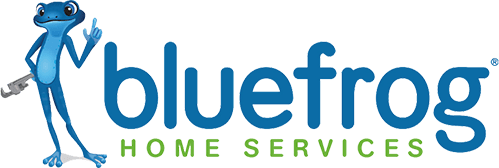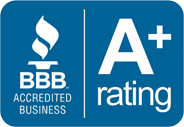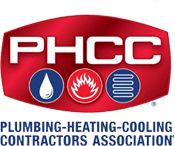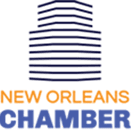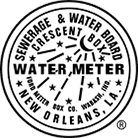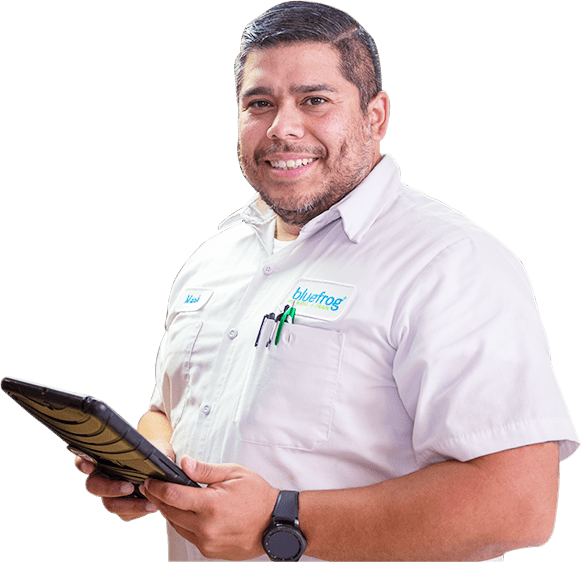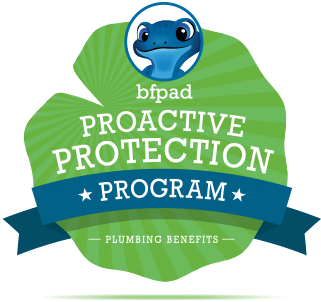
Safeguard Your Home: The Essentials of Water Backflow Testing
Imagine turning on your tap and being unsure of the water’s safety. It’s a concern that’s more common than you might think, but there’s a solution at hand: water backflow testing.
This process is crucial for maintaining the purity of your home’s water supply, ensuring that the water you use daily is safe and clean.
In this article, we’ll explore everything you need to know about water backflow testing. From its definition to its importance, and how it can prevent potential health hazards.
We’ll also delve into professional services that specialize in this essential service, ensuring your peace of mind.
Also read: EFFORTLESS CATCH BASIN CLEANING: A HOMEOWNER’S GUIDE TO CLARITY
What is Water Backflow Testing?
Water backflow testing is a critical procedure aimed at preventing contaminated water from reversing its flow back into clean water supplies.
This test checks the functionality of backflow prevention devices, ensuring they operate correctly to protect your drinking water from contamination.
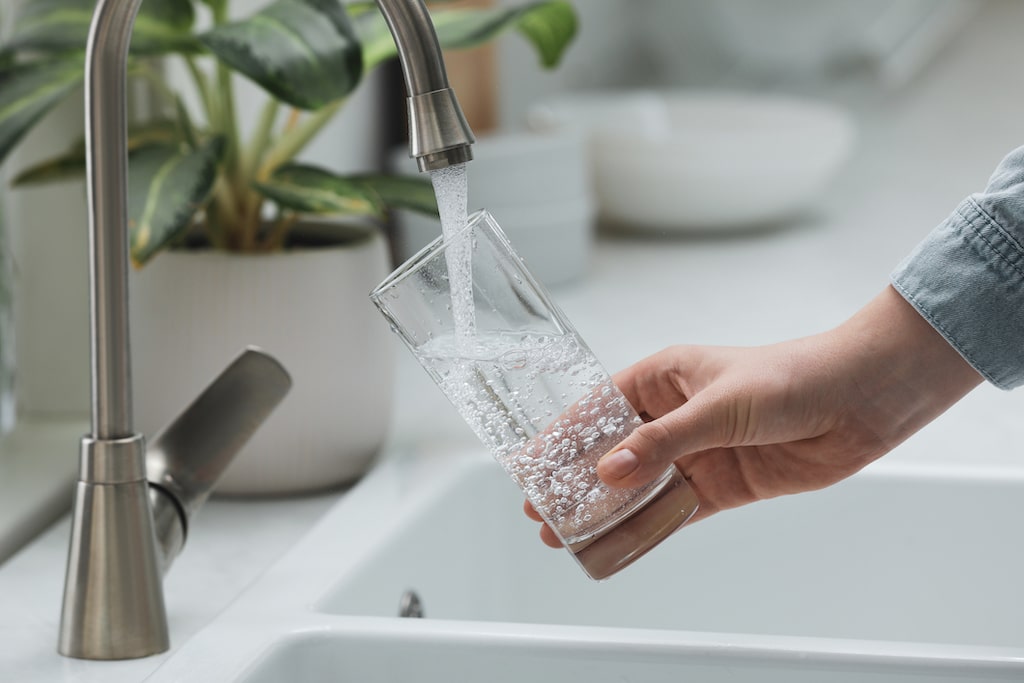
Photo By Liudmila Chernetska at iStock
Why Water Backflow Testing is Essential
Understanding the Risks of Contaminated Backflow
Water backflow testing is not just a regulatory requirement; it’s a critical safeguard for your health and property.
When backflow preventers fail, contaminated water can reverse its flow back into your clean water supply, posing serious health risks.
Contaminants can range from pesticides and fertilizers from garden hoses to more hazardous chemicals from industrial processes. Regular water backflow testing ensures these devices function correctly, protecting your water from contamination.
The importance of this testing becomes evident when considering the potential health hazards.
Contaminated water can lead to gastrointestinal illnesses, skin irritations, and more severe health conditions depending on the contaminants’ nature. Test backflow procedures are designed to identify any failure in the system, preventing these health risks before they can affect your household.
Moreover, the cost of neglect can be high. While homeowners might wonder, how much does backflow testing cost?, the real question should be about the cost of not testing.
The expense associated with health care for illnesses caused by contaminated water, or the property damage from water system failures, can far exceed the price of regular testing. Investing in water backflow testing is investing in your family’s health and your property’s integrity.
The Environmental Impact of Backflow Contamination
Beyond the immediate health risks and potential for property damage, contaminated backflow poses a significant threat to the environment.
When backflow preventers fail, pollutants can enter not just your home but also the broader water system, affecting local waterways, wildlife, and ecosystems. Water backflow testing plays a crucial role in preventing such environmental contamination.
The process of test backflow is not only about protecting individual homes but also about safeguarding community health and environmental well-being.
Contaminants like industrial waste, agricultural runoff, and untreated sewage can have devastating effects on aquatic life, water quality, and biodiversity.
Regular testing and maintenance of backflow prevention devices are essential measures to prevent these pollutants from entering our natural water systems.
In this context highlights the value of testing as an investment in environmental protection. The cost is minimal compared to the potential environmental restoration costs and the invaluable benefit of preserving clean water resources for future generations.
Compliance and Legal Implications of Neglecting Water Backflow Testing
Adhering to local regulations regarding water backflow testing is not only a matter of public health and safety but also a legal requirement.
Many municipalities and states have specific codes and standards in place, requiring property owners to conduct regular backflow testing to ensure their systems are up to code. Failure to comply can result in fines, legal penalties, and even the disconnection of water services.
The legal framework around test backflow procedures underscores the collective responsibility of homeowners, businesses, and institutions to maintain the integrity of the public water supply. It’s a shared duty to prevent contamination and protect the community’s health.
It’s essential to factor in the potential legal costs of non-compliance.
The expense of testing is significantly lower than the fines for violating local codes, not to mention the potential legal fees and the cost of rectifying any contamination incidents.
Regular water backflow testing is a small price to pay for peace of mind and legal compliance.
Also read: QUICK PLUMBING REPAIR FIXES: YOUR DIY GUIDE
How Water Backflow Testing Works
The Initial Inspection and Preparation
Water backflow testing begins with a thorough initial inspection conducted by certified professionals. This first step is crucial for identifying any potential issues that might affect the testing process or the water system’s integrity.
Inspectors look for signs of wear and tear, check the installation and condition of backflow prevention devices, and assess the overall system setup. This preliminary evaluation helps in planning the testing process, ensuring that it’s conducted efficiently and effectively.
Preparation also involves notifying the homeowner about the test and what it entails. Professionals will explain how much does backflow testing cost, what the process looks like, and how long it will take.
This transparency is key to building trust and ensuring homeowners are comfortable and informed about the procedure.
Preparation might also include isolating the device to be tested from the water system to prevent any disruption to the water supply during the testing.
The importance of choosing a qualified and experienced tester cannot be overstated. Homeowners should ensure that the professional conducting the test backflow is certified and has a good track record.
This initial stage sets the tone for the entire testing process, highlighting the professionalism and attention to detail required for accurate and reliable results.
Conducting the Test
The actual water backflow testing process involves a series of steps designed to evaluate the effectiveness of backflow prevention devices.
Testers use specialized equipment to simulate various backpressure and backsiphonage conditions, checking whether the device properly prevents contaminated water from flowing back into the clean water supply.
This testing is critical for identifying any malfunction or degradation in the device’s performance.
During the test, professionals monitor the device’s response to different scenarios.
A properly functioning backflow preventer will block or redirect the flow of water, ensuring that only clean water remains in the supply lines. If the device fails any part of the test, it indicates a risk of contamination that must be addressed immediately.
The complexity of water backflow testing underscores the need for professional expertise.
Homeowners often wonder, how much does backflow testing cost? While costs can vary based on location, device type, and testing complexity, the investment is invaluable for the peace of mind and protection it provides.
Ensuring your backflow prevention device is in working order is essential for maintaining a safe water supply.
Analysis and Final Report
After completing the water backflow testing, the professional will analyze the results and compile a detailed report. This document is crucial for homeowners, as it provides a clear and concise overview of the test findings, including any issues detected and recommendations for remediation.
A comprehensive report not only ensures compliance with local regulations but also serves as a record of the device’s condition and functionality.
If the test uncovers any problems, the report will outline the necessary steps for repair or replacement. Professionals can often provide guidance on addressing these issues, including estimated costs and timelines. Understanding how much does backflow testing cost for repairs or replacements is important for homeowners to budget for any necessary work.
The final report also includes certification that the backflow prevention device has been tested and is functioning correctly, assuming no issues were found.
This certification is often required by local water authorities to confirm compliance with safety standards. Keeping this documentation on file is important for homeowners, as it verifies that their property is protected against the risks of water contamination.

Photo By Dmitry Demidovich at ShutterStock
Top 5 Tested and Proven Tips for Ensuring Your Water Safety
1. Understanding Backflow Prevention Methods
Backflow Prevention Methods | WaterWorld discusses the importance of keeping water supply systems isolated from potential contamination sources.
Backflow occurs when contaminated water reverses direction and enters the clean water supply, posing serious health risks.
Fit your pipe fixtures with backflow prevention devices to safeguard water quality. Effective backflow prevention is crucial for both public health and environmental protection, ensuring that the water supply remains uncontaminated and safe for consumption.
2. Top Backflow Prevention Methods for Residential Water Systems
Key strategies include installing air gaps, Reduced Pressure Zone (RPZ) Assemblies, and Double Check Valves. These methods help prevent contaminated water from flowing back into the clean water supply, protecting households from potential health hazards.
Understanding and implementing these prevention techniques can significantly reduce the risk of water contamination.
3. Safeguarding Water Quality: A Comprehensive Guide to Backflow Prevention
Know local regulations and maintain backflow prevention devices.
Familiarizing yourself with local codes and ensuring your backflow prevention devices are in good working order are key steps in safeguarding water quality.
This guide provides homeowners with valuable tips on how to effectively prevent backflow incidents, highlighting the role of professional inspections and regular maintenance.
4. The Benefits of Professional Backflow Testing Services
Professional testing can prevent water contamination, ensure compliance with local regulations, and maintain the integrity of your water supply system. The article outlines five key benefits of professional backflow testing, including enhanced safety and peace of mind for property owners.
Opting for professional services ensures thorough testing and compliance with the latest standards.
5. Innovative Backflow Prevention Technologies
New advancements in valve designs and monitoring systems are making it easier and more efficient to prevent backflow incidents.
Stay informed about these developments to implement the most effective backflow prevention strategies in their water supply systems.
How to Choose the Right Professional for Your Water Backflow Testing
Selecting a professional for your water backflow testing needs is a crucial decision that impacts the safety and quality of your home’s water supply. This process involves evaluating various factors such as certifications, experience, and customer feedback.
By understanding these criteria, homeowners can make informed choices, ensuring their water systems are tested by competent and reliable professionals.
Importance of Certifications in Water Backflow Testing
When it comes to water backflow testing, certifications are not just pieces of paper; they are a testament to a professional’s knowledge, skill, and commitment to industry standards.
Certified backflow testers have undergone rigorous training and examinations to prove their expertise in preventing water contamination through effective backflow prevention methods.
These certifications, often issued by recognized industry organizations or local health and safety authorities, ensure that the professional is up-to-date with the latest backflow prevention techniques and regulations.
The first step in choosing the right professional is to verify their certifications. A certified backflow tester will understand the complexities of different backflow prevention devices and how to test them accurately. This knowledge is crucial for identifying potential issues that could lead to water contamination.
Furthermore, certified professionals are required to adhere to a code of ethics and standards, providing an additional layer of trust and reliability for homeowners.
In addition to peace of mind, hiring a certified professional for test backflow procedures can also have practical benefits. Many local regulations require that backflow testing and maintenance be performed by certified individuals.
Failure to comply with these regulations can result in fines or even disconnection of your water supply. Therefore, ensuring that your backflow tester is certified not only guarantees quality service but also compliance with local laws.
Evaluating Experience and Expertise
While certifications are crucial, the experience and expertise of a backflow testing professional play a significant role in ensuring thorough and reliable testing. An experienced tester has likely encountered a wide range of backflow prevention systems and common issues, equipping them with practical knowledge that extends beyond theoretical understanding.
This experience enables them to quickly identify and address potential problems, ensuring your water supply remains safe and uncontaminated.
When evaluating a professional’s experience, consider the number of years they have been in the field and the types of properties they have serviced.
A professional who has worked on a variety of properties, from residential homes to commercial buildings, will have a broader understanding of different backflow prevention needs.
Additionally, inquire about their familiarity with the specific backflow prevention devices installed in your property, as different devices may require unique testing approaches.
Another aspect of expertise is the professional’s commitment to ongoing education. The field of water safety and backflow prevention is continually evolving, with new technologies and regulations emerging regularly.
A professional who stays informed about the latest developments in the industry demonstrates a dedication to providing the best possible service. This commitment to learning can be a key differentiator in choosing the right professional for your water backflow testing needs.
The Role of Customer Reviews and Feedback
In today’s digital age, customer reviews and feedback are invaluable resources for homeowners seeking to hire a professional for water backflow testing.
Reviews can provide insights into a professional’s reliability, punctuality, customer service, and the overall quality of their work. Positive feedback from previous clients is a strong indicator of a professional’s competence and professionalism.
When reading reviews, look for comments that specifically mention the professional’s thoroughness in testing, their ability to communicate findings clearly, and their promptness in addressing any identified issues.
Additionally, pay attention to how the professional responds to both positive and negative reviews. A professional who responds thoughtfully and constructively to feedback demonstrates a commitment to customer satisfaction and continuous improvement.
However, it’s important to approach reviews critically and consider the source. Reviews on the professional’s website or social media pages may be curated, so it’s beneficial to consult independent review sites or ask for references directly.
Speaking with past clients can provide a more detailed and personal understanding of what to expect from the professional’s services.
Maximizing the Benefits of Water Backflow Testing
Ensuring the safety and compliance of your home’s water supply involves more than just selecting the right professional for water backflow testing.
It requires an understanding of the process, recognizing its benefits, and knowing how to act on the results. This section delves into the broader implications of water backflow testing, offering homeowners insights into maximizing the advantages of this crucial service.
The Role of Water Backflow Testing in Home Safety
Water backflow testing plays a pivotal role in maintaining the safety of your home’s water supply. This process is designed to prevent the reverse flow of water from potential contamination sources, which can include chemicals, bacteria, and other hazardous substances.
By ensuring that backflow prevention devices are functioning correctly, water backflow testing protects your family from the risks associated with contaminated water, such as illness and disease.
The first step in leveraging the benefits of water backflow testing is to understand how these systems work.
Backflow prevention devices are installed in your home’s plumbing system to block contaminated water from reversing into the clean water supply.
Regular testing checks these devices for faults or failures that could compromise their effectiveness. Homeowners should be proactive in scheduling tests, ideally on an annual basis, to ensure continuous protection.
Awareness of the potential sources of contamination in your area can also enhance the effectiveness of water backflow testing. Factors such as local industrial activities, agricultural runoff, and even the condition of neighboring properties can influence the risk of water contamination.
By understanding these risks, homeowners can better appreciate the importance of regular backflow testing and take additional precautions as necessary.
Navigating the Financial Aspects of Backflow Testing
When considering water backflow testing, homeowners often ask, “How much does backflow testing cost?”
While costs can vary based on location, provider, and the complexity of your home’s plumbing system, it’s important to view these expenses in the context of the value they provide.
Regular backflow testing is an investment in the health and safety of your household, as well as a requirement for compliance with local water safety regulations.
To navigate the financial aspects of backflow testing, homeowners should start by researching average costs in their area. This can provide a baseline for comparing quotes from different service providers.
It’s also wise to inquire about what is included in the testing fee. Some professionals may offer comprehensive services that include inspection, testing, and any necessary adjustments or repairs, which can offer significant value.
Additionally, homeowners should consider the long-term savings associated with regular backflow testing.
By identifying and addressing potential issues early, you can avoid the costs associated with water contamination incidents, including health care expenses and property damage. Some insurance policies may also offer discounts for homes that maintain up-to-date backflow testing, providing another avenue for financial savings.
Acting on the Results of Backflow Testing
The final step in maximizing the benefits of water backflow testing is understanding how to act on the results.
If your testing reveals that your backflow prevention device is functioning correctly, you can have peace of mind knowing your water supply is protected. However, if issues are identified, it’s crucial to take prompt action to address them.
Homeowners should work closely with their chosen professional to understand the implications of any problems detected during testing. In some cases, simple adjustments or repairs may be sufficient to restore protection. In more severe instances, replacing the backflow prevention device may be necessary.
Regardless of the required action, timely response is key to ensuring the continued safety of your water supply.
Furthermore, homeowners can use the results of backflow testing as an opportunity to review and enhance their overall water safety practices. This might include implementing additional protective measures, such as installing water filters or purifiers, to further safeguard against contamination.
Regular consultation with a water safety professional can provide personalized advice and recommendations based on the specific needs of your home.
Maximizing the benefits of water backflow testing involves a comprehensive approach that includes understanding the process, managing the financial aspects, and acting on the results.
By taking these steps, homeowners can ensure the safety and compliance of their water supply, protecting their families and properties from the risks of water contamination.
Enhancing Home Water Safety Through Backflow Prevention
In the quest to maintain a safe and healthy home environment, understanding and implementing effective water backflow prevention strategies are paramount. This section delves into the nuances of enhancing your home’s water safety, emphasizing the critical role of water backflow testing.
By exploring innovative prevention techniques, the financial implications of testing, and the impact of regulatory compliance, homeowners can gain comprehensive insights into safeguarding their water supply.
Innovative Backflow Prevention Techniques
In the realm of water backflow testing, staying abreast of the latest prevention technologies and strategies is key to ensuring the utmost safety of your home’s water supply.
The evolution of backflow prevention has led to the development of sophisticated devices and systems designed to thwart the contamination of potable water sources effectively. From advanced valve designs to smart monitoring systems, these innovations offer enhanced protection against the reverse flow of contaminated water.
Understanding the mechanics behind these technologies can empower homeowners to make informed decisions when upgrading or installing backflow prevention systems.
For instance, Reduced Pressure Zone (RPZ) assemblies and Double Check Valve assemblies represent two of the most reliable configurations for residential properties. These systems are engineered to detect and block contamination, ensuring that your water remains safe for consumption.
Moreover, the integration of smart technology into backflow prevention offers real-time monitoring capabilities, alerting homeowners to potential failures or breaches in the system. This proactive approach to water safety allows for immediate action, minimizing the risk of contamination.
As you consider these innovative techniques, consulting with a certified professional specializing in water backflow testing can provide tailored recommendations that align with your home’s specific needs and local water safety regulations.
Budgeting for Backflow Testing and Prevention
While the importance of water backflow testing is undeniable, many homeowners are concerned about the costs associated with these essential services.
“How much does backflow testing cost?” is a common question that arises during the planning and budgeting process.
It’s important to recognize that the cost of testing and prevention can vary widely based on several factors, including the complexity of your plumbing system, the type of backflow prevention device installed, and the rates of local certified testers.
To effectively budget for backflow testing and prevention, homeowners should start by obtaining multiple quotes from certified professionals. This comparison shopping can help you find a service provider that offers a balance of expertise and affordability.
Additionally, some municipalities or water utilities may offer subsidies or incentives for homeowners who proactively engage in backflow prevention measures, further offsetting the costs.
Investing in quality backflow prevention devices and regular testing may entail upfront costs, but it’s crucial to consider the long-term savings.
Preventing water contamination incidents not only protects your family’s health but also avoids the potentially significant expenses associated with remedying contamination, such as medical bills, water system repairs, and compliance fines.
Viewing backflow testing and prevention as an investment in your home’s safety and value can help justify the expenditure.
Navigating Regulations and Ensuring Compliance
Adhering to local and national regulations regarding water backflow prevention is not only a legal obligation but also a critical component of maintaining a safe water supply.
Compliance with these regulations ensures that your home’s water system meets established safety standards, protecting you and your community from the risks of water contamination.
Understanding the regulatory landscape can help homeowners navigate the requirements and ensure that their backflow prevention measures are up to par.
Homeowners should familiarize themselves with the specific backflow prevention codes and standards applicable in their area. These regulations often dictate the type of backflow prevention device required, testing frequencies, and certification requirements for testers. Ensuring that your backflow testing and prevention efforts align with these guidelines is essential for maintaining compliance and avoiding penalties.
Engaging with a certified water backflow testing professional who is well-versed in local regulations can streamline the compliance process. These experts can provide valuable guidance on selecting the appropriate backflow prevention devices, scheduling regular tests, and documenting compliance for regulatory bodies.
By taking a proactive approach to regulatory compliance, homeowners can contribute to the collective effort of safeguarding the community’s water quality.
Enhancing home water safety through backflow prevention encompasses a multifaceted approach, including staying informed about innovative technologies, effectively managing the costs associated with testing and prevention, and navigating the regulatory landscape to ensure compliance.
By prioritizing these aspects, homeowners can protect their families from the dangers of water contamination and contribute to the overall safety and well-being of their communities.
Strategic Approaches to Water Backflow Prevention
This section aims to equip homeowners with strategic insights and practical advice on preventing water backflow incidents, ensuring their water supply remains uncontaminated and safe for use.
By understanding the various approaches to backflow prevention, homeowners can take proactive steps to safeguard their homes effectively.
Integrating Advanced Backflow Prevention Technologies
The advancement of technology has introduced a range of sophisticated solutions designed to enhance the effectiveness of backflow prevention. This subsection should explore the latest innovations in backflow prevention devices and systems, highlighting how these technologies offer superior protection against the risk of water contamination.
Innovative Device Features: Discuss the features of advanced backflow prevention devices, such as automated monitoring systems, which can alert homeowners to potential backflow incidents in real-time.
Highlight how these features contribute to a more robust defense against contamination.
Choosing the Right Technology: Provide guidance on selecting the most appropriate backflow prevention technology for different types of residential water systems.
This includes considerations for system size, potential contamination sources, and regulatory compliance requirements.
Installation and Maintenance Best Practices: Offer advice on the professional installation of advanced backflow prevention devices, including the importance of choosing certified installers. Also, discuss the maintenance requirements of these devices to ensure they remain effective over time.
Cost-Effective Management of Backflow Testing and Prevention
While recognizing the importance of water backflow testing and prevention, homeowners often seek ways to manage these responsibilities cost-effectively.
This subsection should address strategies for minimizing the financial impact of backflow prevention measures while maintaining high safety standards.
Understanding Testing Costs: Delve into the factors that influence the cost of water backflow testing, including the type of testing required and regional cost variations. Provide insights into average costs and tips for budgeting for these essential services.
Leveraging Preventive Measures: Discuss how implementing preventive measures can reduce the frequency and severity of backflow incidents, potentially lowering the long-term costs associated with testing and device maintenance.
Exploring Financial Assistance and Incentives: Highlight any available programs or incentives that can help homeowners offset the costs of backflow testing and prevention.
This may include rebates, tax incentives, or subsidized programs offered by local governments or water utilities.
Regulatory Compliance and Environmental Stewardship
Adhering to backflow prevention regulations is not only a legal requirement but also a component of responsible environmental stewardship. This subsection should explore the intersection of regulatory compliance and the protection of community water resources.
Navigating Local and National Regulations: Provide an overview of the regulatory landscape surrounding water backflow prevention, including common requirements and how they vary by location.
Emphasize the importance of compliance for both legal and safety reasons.
The Role of Homeowners in Water Conservation: Discuss how effective backflow prevention contributes to broader water conservation efforts and the protection of local waterways from contamination.
Future Trends and Importance of Water Backflow Testing
This section aims to explore the evolving landscape of water backflow testing, highlighting future trends, technological advancements, and the growing importance of proactive water safety measures in residential areas.
By understanding these dynamics, you can better appreciate the critical role of water backflow testing in ensuring a safe, sustainable water supply.
Technological Advancements in Backflow Prevention
The field of water backflow prevention is rapidly evolving, with new technologies enhancing the efficiency and reliability of testing and prevention methods.
This subsection should delve into the latest innovations in backflow prevention technology and how they are set to change the landscape of water safety.
- Smart Monitoring Systems: Discuss the development of smart sensors and IoT (Internet of Things) devices designed to monitor water systems in real-time, providing immediate alerts in the event of a backflow risk.
Highlight how these technologies offer homeowners peace of mind and greater control over their water safety.
- Automated Testing Solutions: Explore advancements in automated backflow testing technologies that streamline the testing process, reducing the need for manual intervention and potentially lowering the costs associated with regular testing.
- Sustainability and Water Conservation: Address how modern backflow prevention devices are designed with sustainability in mind, contributing to water conservation efforts by minimizing waste and ensuring the efficient use of water resources.
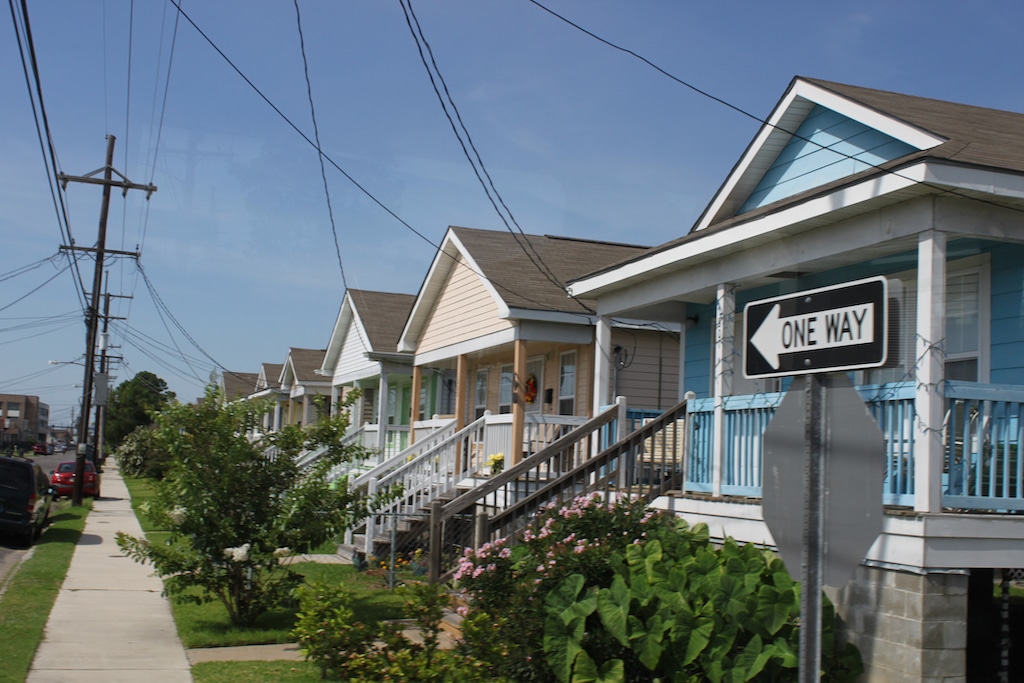
Photo By KathyKafka at iStock
Bluefrog Home Services of New Orleans: Your Partner in Water Safety
When it comes to ensuring the safety and compliance of your home’s water supply in New Orleans and its surrounding areas, Bluefrog Home Services of New Orleans stands out as a reliable partner.
Specializing in water backflow testing, Bluefrog Home Services offers comprehensive solutions designed to protect your home from the risks of water contamination.
With a team of certified professionals, they provide top-notch services in New Orleans, Harvey, and Timberlane, LA, ensuring your water system is thoroughly tested and compliant with local regulations.
For more details on how Bluefrog Home Services can assist you with your water backflow testing needs, visit their Google My Business page here or call 504-229-4848 to schedule a service.
Their commitment to quality and customer satisfaction makes them the go-to service provider for all your backflow testing needs.
In the bustling heart of New Orleans and its surrounding areas, homeowners face the critical task of ensuring their water supply remains safe and uncontaminated.
This is where bluefrog Home Services of New Orleans steps in, offering expert water backflow testing services that stand as a bulwark against the risks of water contamination.

Photo By Liudmila Chernetska at iStock
FAQs
- What exactly is water backflow testing?
Water backflow testing is a crucial process that checks if the plumbing system’s backflow preventers are functioning correctly. These devices are designed to stop contaminated water from reversing flow and entering the clean water supply, ensuring the water in your home remains safe for use and consumption. - How often should water backflow testing be conducted?
It’s recommended to have water backflow testing done annually. Regular testing helps in early detection of potential issues, ensuring the backflow prevention devices are in optimal working condition to protect your home’s water supply from contamination. - Can I perform water backflow testing by myself?
Water backflow testing should be performed by certified professionals. The process requires specialized knowledge and tools to accurately assess the function of backflow preventers and ensure they meet local regulatory standards. - What are the signs that I might need water backflow testing?
If you notice changes in water quality, such as odd tastes, colors, or odors, it could indicate a backflow issue. Additionally, if your system has not been tested in over a year, it’s time to schedule a test to ensure compliance and safety. - Why choose Bluefrog Home Services of New Orleans for my water backflow testing needs?
Bluefrog Home Services of New Orleans offers expert backflow testing services by certified professionals.
With a focus on customer satisfaction and compliance with local regulations, they ensure your water supply is protected against contamination, providing peace of mind for you and your family.
Engage with us: Have you ever experienced issues with your water supply that required backflow testing?
Share your stories in the comments below and let us know how water backflow testing made a difference in your home.
Read our previous blog post.
Check out this tip!
Manny Mitten

